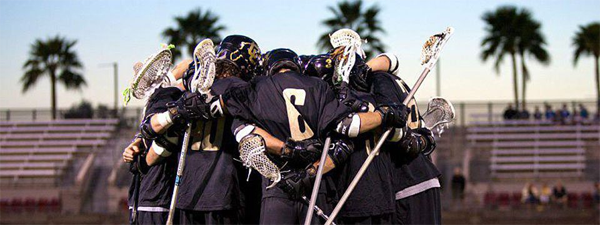High school lacrosse players risk concussions and other injuries
With more than 170,000 students now playing high school lacrosse, more and more are being exposed to injuries during practice and competition, according to a new study from the Colorado School of Public Health and the Center for Injury Research and Policy at Nationwide Children’s Hospital in Columbus, Ohio.
The study, published by The American Journal of Sports Medicine, found high school lacrosse players experienced 1,406 injuries during the four academic years from 2008 through 2012. The overall injury rate was 20 per 10,000 lacrosse competitions and practices.
More than 22 percent of those were concussions, making it the second most common injury diagnosis behind sprains and strains (38 percent).
Dawn Comstock, PhD, an author of the study and an associate professor of Epidemiology for the Pediatric Injury Prevention, Education and Research (PIPER) program at the Colorado School of Public Health, said the findings contribute to evidence-based discussions of how to prevent injury – including the current debate over whether girls’ lacrosse players should wear helmets as boys are required to do.
“Concern over concussions in both boys’ and girls’ lacrosse underscores the need to learn more about these injuries,” Comstock said. “Further study will help those working to develop and implement effective injury prevention programs.”
Researchers also found that while the rules for girls’ lacrosse largely prohibit person-to-person contact, almost 25 percent of concussions were a result of such contact. Another 63 percent of concussions resulted from being struck by lacrosse sticks or balls. Most girls’ lacrosse players are only required to use protective eye-wear and mouth guards, and not the helmets and additional padding required for boys’ lacrosse.
“Lacrosse is becoming more and more popular across the United States, and it’s a great way for high school students to be active,” said Lara B. McKenzie, PhD, an author of the study, principal investigator in the Center for Injury Research and Policy at Nationwide Children’s. “Still, we see injuries in the sport every day during the season. Our research shows that we need to do more and can do more to prevent those injuries.”
Boys’ and girls’ high school lacrosse have different rules regarding person-to-person contact, and the study found the number and type of injuries differed between genders. Boys sustained 67 percent of the total injuries, and had a higher overall injury rate than girls. About 36 percent of their injuries were sprains and strains, and some 22 percent were concussions. Person-to-person contact, which is allowed in boys’ lacrosse, caused 74 percent of concussions and 41 percent of injuries overall.
Almost 44 percent of injuries to girls were sprains and strains while concussions made up another 23 percent. The most common causes of injuries were no contact – a foot pivot leading to a pulled muscle -- and contact with playing equipment. For both genders, injury rates were higher during competition than practice.
Players, coaches, officials, athletic trainers and parents can help make lacrosse a safer game by following these tips from researchers and lacrosse organizations:
Strictly enforce all rules, especially those limiting player-to-player contact.
Learn the symptoms of concussion. Any athlete suspected of having a concussion should stop play immediately and be evaluated by a certified athletic trainer or other medical professional.
Warm up properly, drink plenty of water, and rest after practice or competition.
Wear well-fitting protective equipment.
Be prepared for injuries before they happen by making sure procedures, such as emergency action plans, are in place to handle them.
The study is the first to use a large national sample of United States high schools to compare lacrosse injuries by type of athletic activity and gender. Data was collected from the National High School Sports-Related Injury Surveillance System, High School RIO (Reporting Information Online), which uses reports from certified athletic trainers throughout the country.


